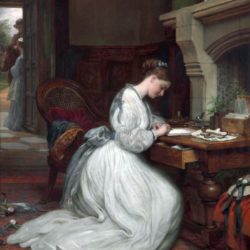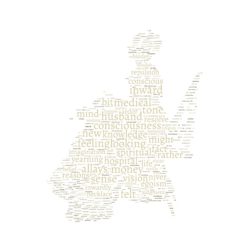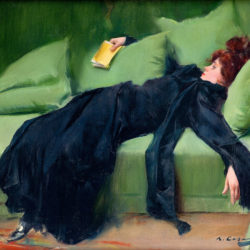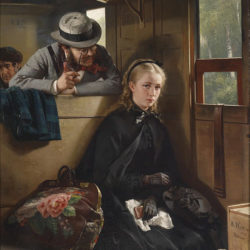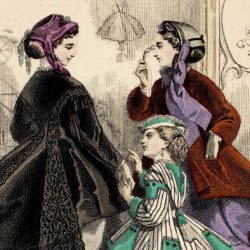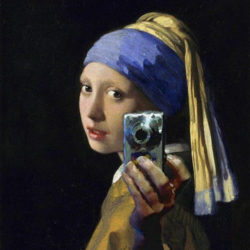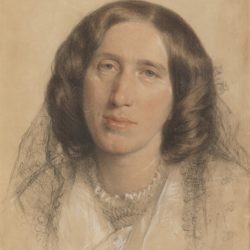Theadora Jean is a Gothic scholar and writer. Her novella The Westenra House, a 21st century adaptation of Dracula stripped of the supernatural, based on found text and social media, formed part of her critical-creative PhD from Royal Holloway. She writes melancholy, southeast-London Gothic fiction and non-fiction under the name T.S.J. Harling, her print chapbook, … Continue reading “‘Nothing but a Mass of Typewriting’: Dracula as Palimpsest”
Tag: corpus stylistics
Venture into the Past with #CLiCCreative: A New Frontier in Historical Fiction Writing
In our latest #CLiCCreative video, we invite you to embark on a journey through time as we unveil the wonders of the CLiC Web App. This powerful tool harnesses the latest in computer-assisted analysis to delve into historical texts, uncovering patterns, frequencies, and structures that will breathe life into your stories. Are you an aspiring … Continue reading “Venture into the Past with #CLiCCreative: A New Frontier in Historical Fiction Writing”
#CLiCCreative George Eliot Keywords Guide
#CLiCCreative demonstrates how the CLiC Web App can serve as both a creative resource and an innovative research tool for writers of historical fiction. You can find out more about the overarching project here. In this blog post, we’ve provided a keywords guide to our George Eliot Corpus for aspiring writers of historical fiction who … Continue reading “#CLiCCreative George Eliot Keywords Guide”
Nightwalking by Magic Lantern, Finding Your Inner Flaneur with Charles Dickens
Sauntering through London’s nocturnal neighbourhoods fuelled Charles Dickens’ imagination and provided him with ample material to people his fictional worlds. What can we learn from his immersive exploration of real-world urban landscapes? In the following activities we’ll take a step back in time using the CLiC Web App to journey through Victorian London via Dicken’s oeuvre. … Continue reading “Nightwalking by Magic Lantern, Finding Your Inner Flaneur with Charles Dickens”
#CLiCCreative Jane Austen Keywords Guide
#CLiCCreative demonstrates how the CLiC Web App can serve as both a creative resource and an innovative research tool for writers of historical fiction. You can find out more about the overarching project here. In this blog post, we’ve provided a keywords guide to our Jane Austen Corpus for aspiring writers of Regency fiction who … Continue reading “#CLiCCreative Jane Austen Keywords Guide”
#CLiCCreative Digital Research Resources for Writers of Neo-Victorian Historical Fiction
The research stage of novel writing can be time-consuming and challenging, but is essential if you want to write a believable and immersive historical story. This stage of the writing process doesn’t have to be daunting! Take a break from conventional fact-finding methods, and take a look at these digital resources that can help you … Continue reading “#CLiCCreative Digital Research Resources for Writers of Neo-Victorian Historical Fiction”
Using CLiC as a Creative Research Tool: Journey to the Past
Whether by rail, on foot, via stagecoach, in a carriage, or aboard a ship, journeys play a pivotal role in novels of the long-nineteenth century. What can we learn about what it was like to travel in another time? In this research activity we’ll be using the CLiC Web App to learn about modes of … Continue reading “Using CLiC as a Creative Research Tool: Journey to the Past”
Using CLiC as a Creative Research Tool: Historical Ventriloquism
Ventriloquy is the art of speaking in such a way that one’s voice appears to come from another source. When it comes to writing believable dialogue, writers of historical fiction are a bit like ventriloquists. How can modern writers give the impression that their characters are conversing in the past? What research methods can we … Continue reading “Using CLiC as a Creative Research Tool: Historical Ventriloquism”
Using CLiC as a Creative Research Tool: Checking your Manuscript for Anachronisms
This post, penned by Dr Rosalind White (@DrRosalindWhite), will provide an overview of how our CLiC Web App can be used as an innovative historical research tool to cross-reference or verify historical details. This can help writers save time and energy, as well as quickly immerse them in the particulars of their preferred period. You … Continue reading “Using CLiC as a Creative Research Tool: Checking your Manuscript for Anachronisms”
George Eliot’s Interjections
Gregory Tate is a Senior Lecturer in Victorian Literature at the University of St Andrews. He is the co-organiser of the AHRC-funded ‘Victorian Literary Languages’ network, and he is writing a book titled The Grammar of Style in Victorian Fiction. In this post, Greg examines George Eliot’s use of, and commentaries on, interjections in her … Continue reading “George Eliot’s Interjections”

